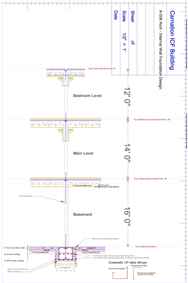Home Site Map - Steps - Preparations -
Produce Blueprints
Conversion to AutoCAD
Need to do it yourself
This is the process whereby your floor plans and elevation drawings are converted to the official blueprints that will be submitted as part of your planning application. Even though you will use your OpenOffice drawings as the input to this process, the reality is that doing AutoCAD drawings requires you to add more detail. Adding this detail is something you need to think about and design yourself. I initially thought the conversion to AutoCAD drawings could be subcontracted, but I am now firmly of the opinion that it is too important a process to subcontract.
There is value in getting a second opinion on your house design from a seasoned professional as they can spot some errors in your design, but you still need to produce the AutoCAD drawings yourself.
You will find that the very act of you entering the design into a different program will help you think about your design from a different perspective.
Some notes on using AutoCAD can be found here .
AutoCAD drawing requirements
1)
The AutoCAD drawing must be to the full spec needed by Structural
engineering, local planning (King County in my case), and any subcontractors you plan to use.
2)
Drawings must conform to your local county building code.
3)
The most usual scale is 1/4" to 1', but sometimes other
scales are used when printing out particular views.
Plans the inspector will need
The following blueprints are required with a planning permit
submission (and it is important that they are all consistent with
each other):
1) Floor Plans
2) Elevations
3) Foundation Plan
4) Details
5) Sections
6) Interior Elevations
1) Floor Plans
This is what most people are familiar with when they are designing a home. It has the layout of the exterior and interior walls. The floor plan blueprints also need to include the dimensions for walls, rooms, wall thickness, windows and doors, kitchen and bath layouts, plumbing layouts, stairs, ceilings, and flooring. The main floor plan is an architectural blueprint of a top view that looks down on the home. You can see entryways, doors and walls. There needs to be one floor plan for each level, and that includes the basement and roof space. Some of these floor plans often have the floor joist placement and roof truss placement. The spacing measurements, fastener schedule, and beam schedule is usually included in this part of the plans.
2) Elevations
This part of the plans help the inspectors understand the height of the outside of the house. It also shows the shape and size of windows, doors, trim, roof material and slope, and anything else that can help describe the outside building designs of the house. There are typically 4 elevation drawings - North, South, East, and West.
3) Foundation Plan
This blueprint shows how the foundation should be built according to the information from any geo-survey. It shows how deep into the ground the footings will go and it gives the dimensions of the footings. It also shows the dimensions of the foundation wall and any columns or blocks used in the foundation. It also needs to show things like any vent locations in the foundation walls. The foundation plan includes details like frost levels, and slope or grade levels when necessary.
4) Details
This is a drawing or drawings for some of the smaller things that have special build instructions. This is more for the carpenters so they can get a good idea of the house design, but inspectors also like to know what's going on. Some of the details might include how a fireplace should look, stairs and handrails, molding and trim or just anything that is different from normal houses. The details sheet is part of the house blueprint package and is as many pages as needed. The details section is where the architect draws special details that might need special attention. Inspectors like to have vivid details.
5) Sections
This part of the blueprint package just shows how the parts of a building fit together. Most of it is common sense, but sometimes walls, stairs, and things like fireplaces need a little extra explaining to avoid confusion. Like detail plans, the sections plans are more for the builder than the inspector, but they like to be kept in the loop.
6) Interior elevations
This is a plan of the important interior items that need special consideration. The usual items are kitchens, bathrooms and fireplaces. Most house blueprints will include specialty interior items like these.
My blueprints
In my case I am the one building the house rather than a contractor so there is no particular need to indicate where things like electrical sockets and lights are installed. I just need to provide enough info to get a building permit.
List of drawings
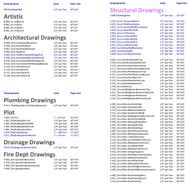
Full plot map
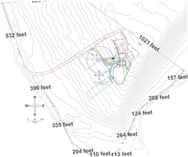
Plot map of build site
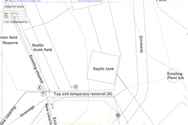
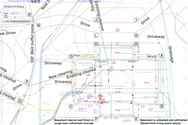
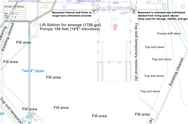
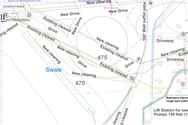
Art drawing - South
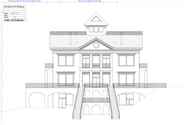
Art drawing - North
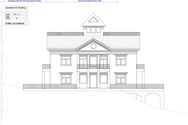
Art drawing - West
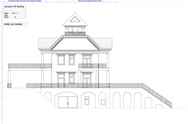
Art drawing - East
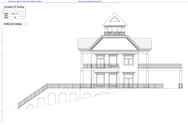
Basement floor plan
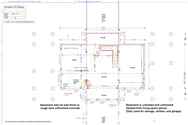
Main level floor plan
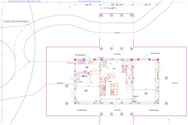
Bedroom level floor plan
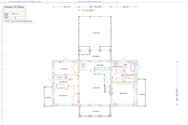
North elevation
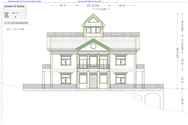
South elevation
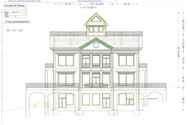
West elevation
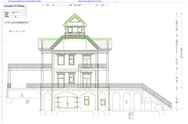
East elevation
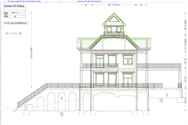
Foundation plan full
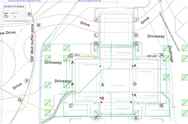
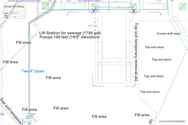
Roof plan
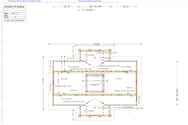
Wall and foundation design full
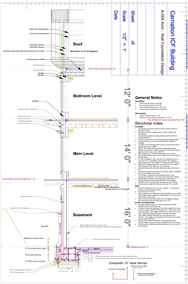
Wall and foundation design interior walls
